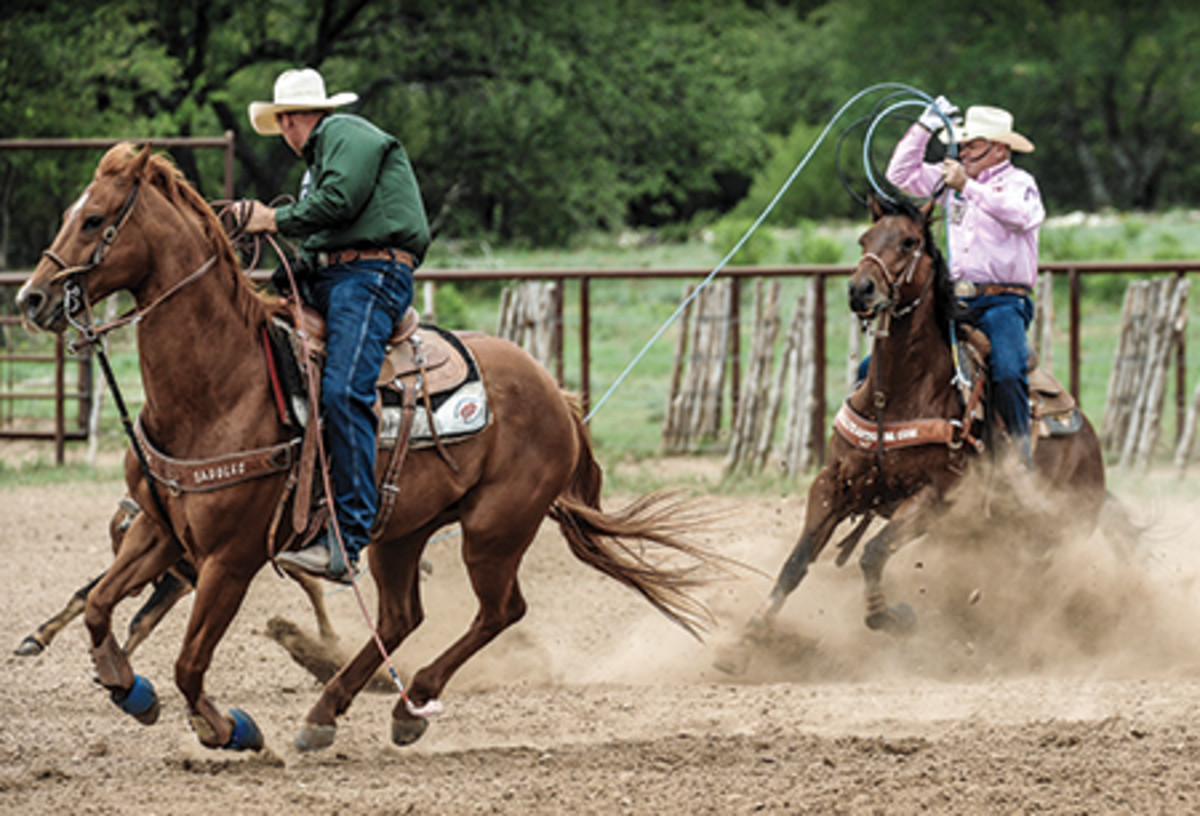Anytime you have a horse that really faces, has a lot of action and finishes the run really well it shaves off time. The top guys work with their horses to get them to face like that. Some of the low-numbered ropings these days have the no-face rule in place to save on the cattle, so those ropers don’t need to demand as much out of their head horses. But at the highest level, horses that finish strong can be the difference between placing and not winning anything.

A lot of facing comes down to the timing of the run—the rhythm you’re pulling the steer in. You want your horse to pivot off of his front end and kick his hind end around to finish the face. He basically uses that momentum from his hind end to take the slack out of the rope.
A lot of low-numbered headers go to the end of it before they start to face, which basically pulls the head horse around. That’s slower, and it’s hard on both the head horse and the heel horse to have to pull that other horse around. It also pulls the steer in two for no reason.
The head horse can feel the rhythm of the heeler getting in time with the steer, and starts to anticipate turning around and facing. When I’m in the practice pen I rarely face my horse, because I don’t want him anticipating too much or he’ll get to where he doesn’t want to pull.
When my heeler ropes, I undally and circle back around to the left before I ride to the catch pen. That takes away his anticipation and keeps him strong back to the left, so if you ever get back over to the fence they’ll pull hard back up the fence if you ask them to.
Low-numbered headers don’t always get a lot of steers heeled by two feet in the practice pen. Don’t face if the steer isn’t caught or it’ll pull your head horse’s head back around. You don’t want to face if the steer’s still moving forward or it’ll jerk your head horse’s head back the wrong way.
If a header turns a steer and the heeler misses, a lot of headers switch and head straight to the catchpen with the steer. That’s a big no-no, because you’re telling your horse he doesn’t need to come back up the fence strong. It’ll teach your head horse bad habits, and you don’t want him shifting down the arena to head to the catch pen before you tell him the run is over. When a practice run is done, I do one of two things. I want my horse to either face fast or I drive him out of there to keep him strong back up the fence.
Photos by Lone Wolf Photography










